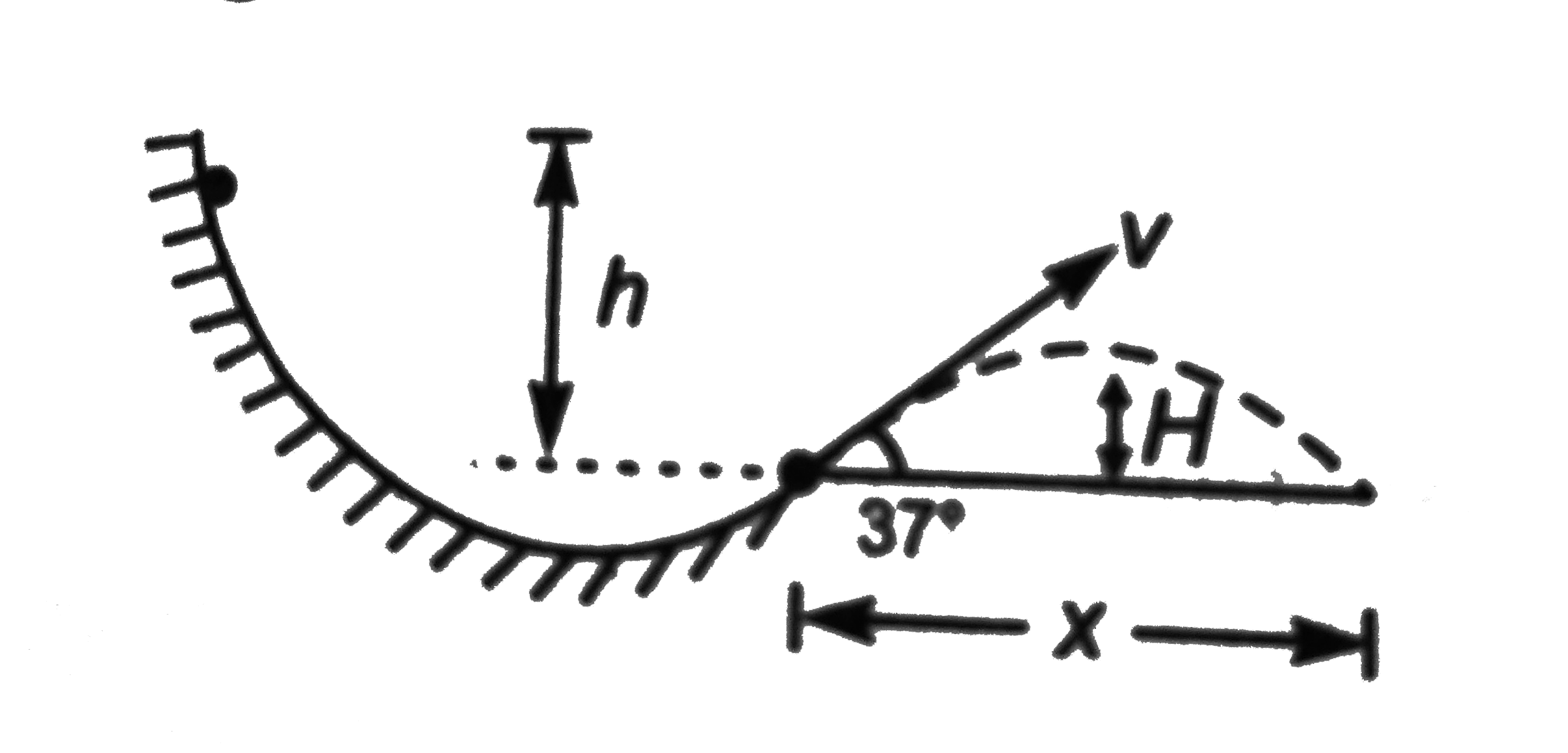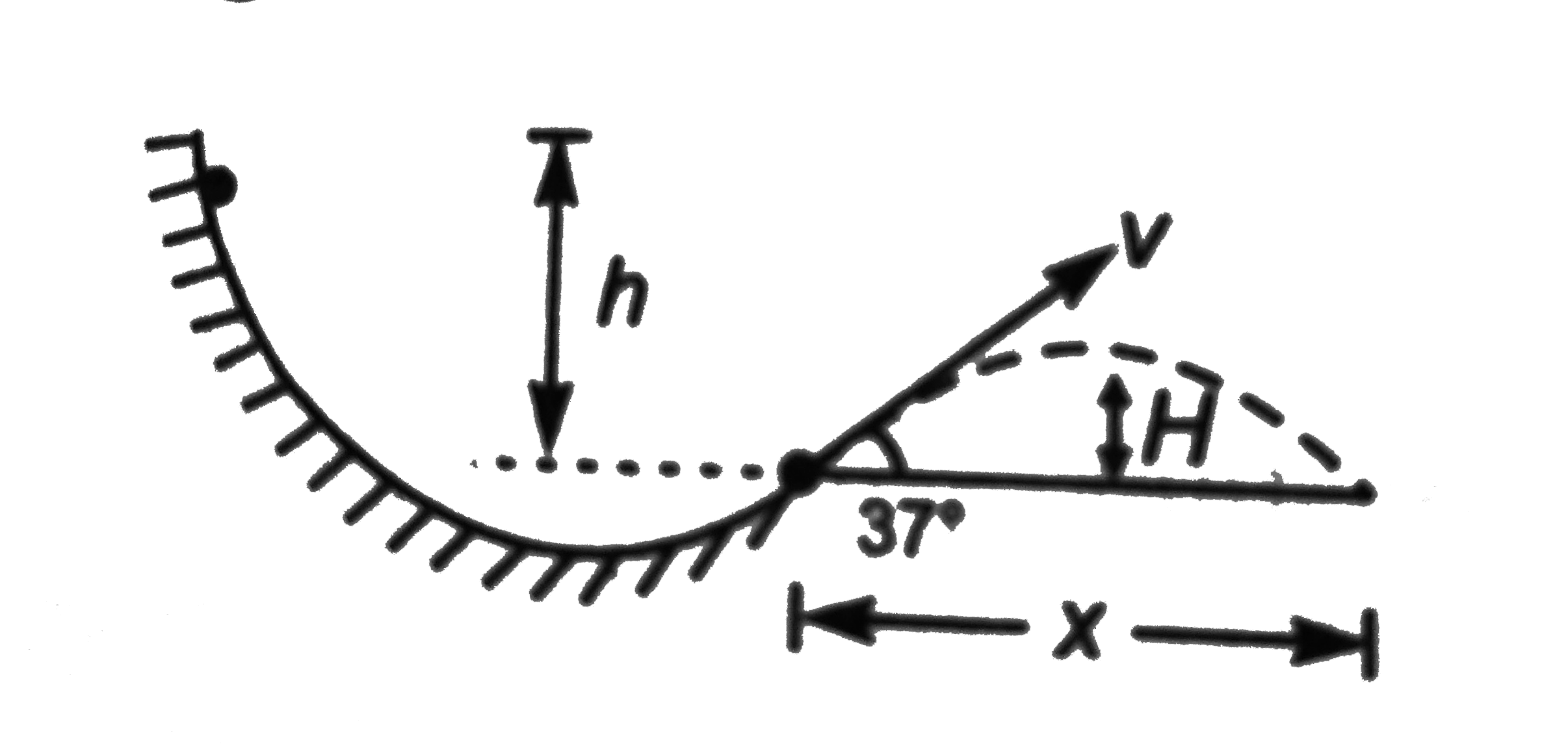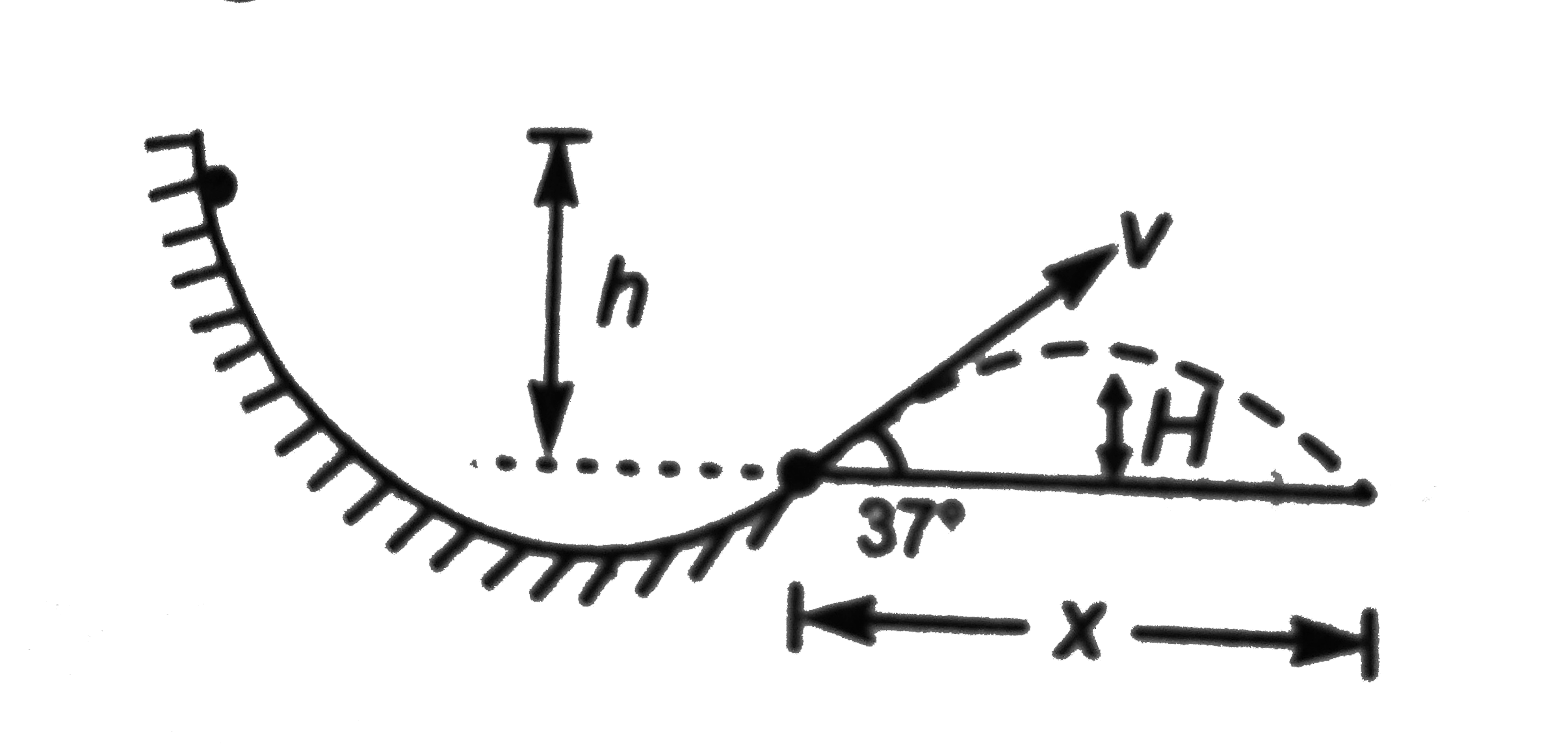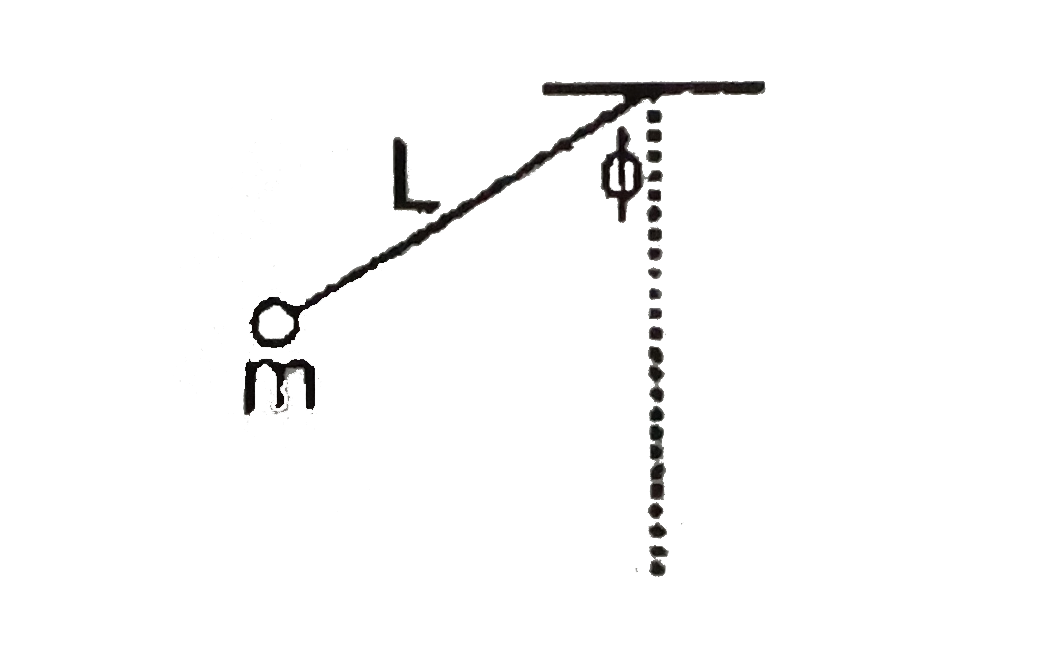
A tennis ball, starting from rest, rolls down the hill in the drawing. At the end of the hill the ball becomes airborne, leaving at an angle of 37∘ with respect to the ground treat the ball as a thin-walled spherical shell.
Q. Range x of the ball is
144125h
4825h
4835h
247h
The correct Answer is:A
R=x=2u2sin37∘cos37∘g
=(2)(6gh/5)(3/5)(4/5)g
=144125h
Topper's Solved these Questions
- ROTATIONAL MECHANICSBOOK - DC PANDEYCHAPTER - ROTATIONAL MECHANICSEXERCISE - Level 2
1 Videos
- ROTATIONAL MECHANICSBOOK - DC PANDEYCHAPTER - ROTATIONAL MECHANICSEXERCISE - Level 2 Subjective
36 Videos
- ROTATIONAL MECHANICSBOOK - DC PANDEYCHAPTER - ROTATIONAL MECHANICSEXERCISE - Level 2 Single Correct
26 Videos
- ROTATIONBOOK - DC PANDEYCHAPTER - ROTATIONEXERCISE - (C) Chapter Exercises
39 Videos
- ROTATIONAL MOTIONBOOK - DC PANDEYCHAPTER - ROTATIONAL MOTIONEXERCISE - Integer Type Questions
17 Videos
Similar Questions
A batter hits a pitched ball when the centre of the ball is 1.22 m above the ground. The ball leaves the bat at an angle of 45∘ with the ground. With that launch, the ball should have a horizontal range (returning to the launch level) of 107 m. (a) Does the ball clear a 7.32-m-high fence that is 9.75 m horizontally from the launch point? (b) At the fence, what is the distance between the fence top and the ball center?
View SolutionA tennis ball launcher is placed on the floor at the front end of a train that has a uniform forward acceleration of 2 m/s2. The launcher projects a ball at an initial speed of 20 m/s with respect to the train toward its rear. The ball achieves a maximum height of 10.0 m. Ignore air resistance. Find how far (in m) from the front end of the train the ball lands inside the train.
View Solution
Knowledge Check

A tennis ball, starting from rest, rolls down the hill in the drawing. At the end of the hill the ball becomes airborne, leaving at an angle of 37∘ with respect to the ground treat the ball as a thin-walled spherical shell.
Q. Maximum height reached by ball H above ground isA9h35B18h35C18h25D27h125
A tennis ball, starting from rest, rolls down the hill in the drawing. At the end of the hill the ball becomes airborne, leaving at an angle of 37∘ with respect to the ground treat the ball as a thin-walled spherical shell.
Q. The velocity of projection v isA√2ghB√107ghC√57ghD√65ghUse the following information to answer question.
A student is conducting an experiment using a ball that is attached to the end of a string on a pendulum. The student pulls the ball back so that it is at an angle to its resting position. As the student releases the ball, it swings forward and backward. The student measures the time it takes the ball to make one complete period. A period is defined as the time it takes the ball to swing forward and back again to its starting position. This is repeated using different string lengths.
The students formed the following hypothesis:Lengthening the string of the pendulum increases the time it takes the ball to make one complete period.What correction would you have the student make to the hypothesis?ATurn it into an ''if/then'' statementBAdd the word ''will'' in the middle after the word ''pendulum''CSwitch the order of the sentence so that the phrase about the period comes first,and the phrase about the string's length is lastDNo corrections are needed
A tennis ball launcher is placed on the floor at the front end of a train that has a uniform forward acceleration of 2m/s^(2) .The launcher projects a ball at an initial speed of 20m/s with respect to the train toward its rear.The ball achieves a maximum height of 10.0m .Ignore air resistance.Find how far (in m) from the front end of the train the ball lands inside the train.
View SolutionA cannot ball and a marble ball roll from rest down an incline. Which goes to the buttom first ?
View SolutionA ball of mass m is projected from ground making an angle q to the horizontal. There is a horizontal wind blowing in the direction of motion of the ball. Due to wind the ball experiences a constant horizontal force of mg√3 in direction of its motion. Find θ for which the horizontal range of the ball will be maximum.
View SolutionA soccer ball is kicked from the ground with an initial speed of 21.3 m/s at an upward angle of 45∘. A player 55 m away in the direction of the kick starts running to meet the ball at that instant. What must be his average speed if he is to meet the ball just before it hits the ground?
View SolutionA pendulum is made by attaching a ball at the end of a string (the other end of the string is attached to the ceiling). The ball is released from rest at the position shown at some angle ϕ. Which of the following vectors may represent the impulse delivered by the string to the ball from the time it is released unitl the ball is at the bottom of the swing when string becomes vertical

View Solution
